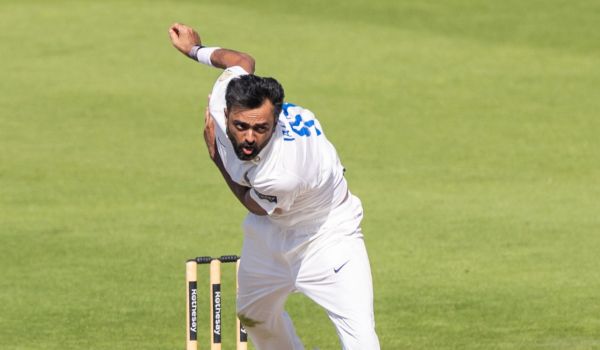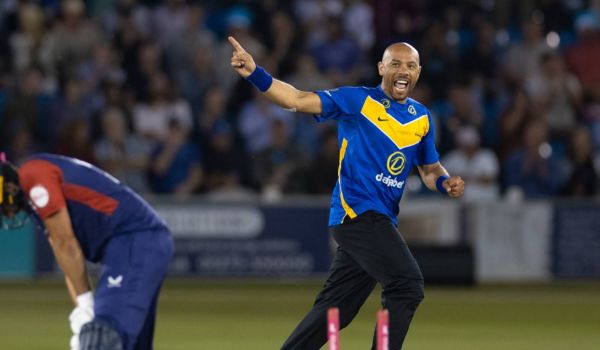One-Day Wonders: Jim Parks on Ted Dexter's 1963 Sussex side
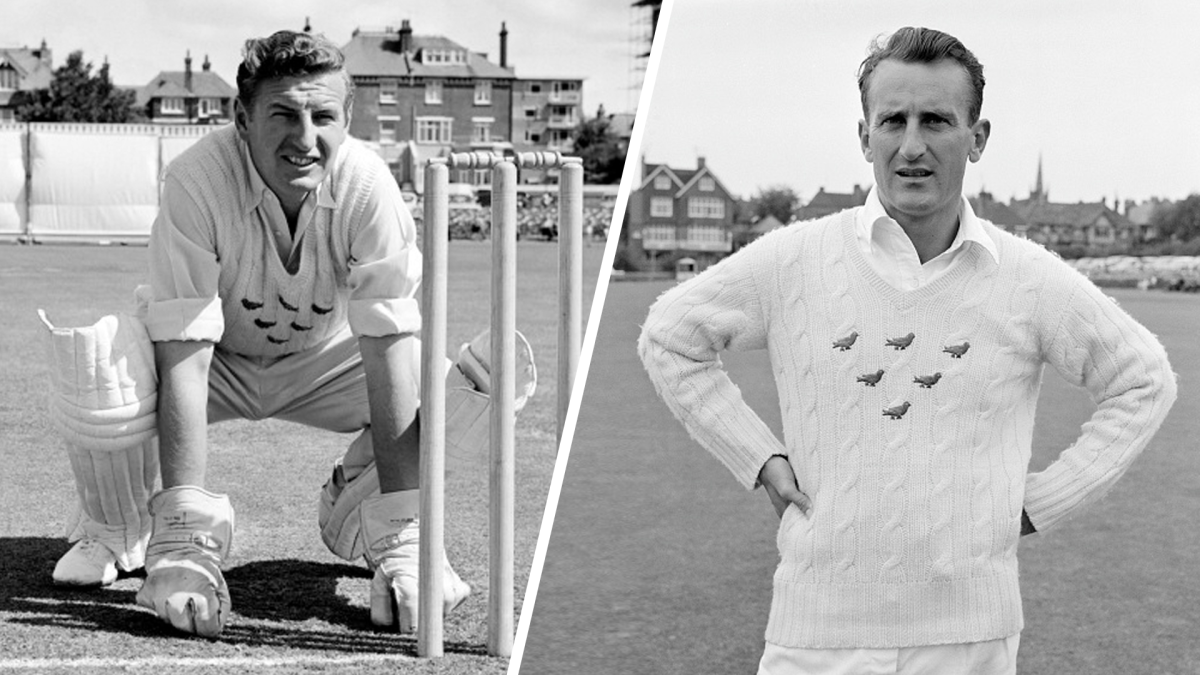
Jim Parks is unequivocal in his assessment.
I’ve just asked him to compare the Sussex team which won the domestic game’s first one-day trophy 48 summers ago to the one which won four limited-overs prizes in four seasons between 2006 and 2009. Jim ruminates over his response for a few seconds. “Well, I think we might have just beaten them,” he declares.
His assessment is certainly not intended as a slight on Chris Adams, James Kirtley, Mushtaq Ahmed, Mike Yardy, Robin Martin-Jenkins and co. Jim was as proud as any Sussex man when the county won at Lord’s for the first time in 20 years in 2006, defeating Lancashire in the final of the C&G Trophy, and followed it with back-to-back triumphs in the 40 overs League and a memorable Twenty20 win at Edgbaston in 2009.
“I just don’t think the one-day sides back in the early Sixties perhaps got enough credit,” he said. “A lot of very fine English players took to the one-day game very easily when it started, it’s just there wasn’t a lot of fuss made at the time. If we’d had a World Cup back then instead of waiting until 1975 I’m convinced England would have won it and probably the next one as well. It’s just that in those days the one-day game didn’t have anywhere near the profile it has now.” The 1964 Wisden devoted just four haughty paragraphs to its assessment of the embryonic one-day competition, two paragraphs on the final and the scorecards.
Nor was there much in terms of financial rewards. The players’ bonus for beating Worcestershire in the first Gillette Cup final at Lord’s in 1963 was a princely £25 while Sussex picked up £1,889 as winners. And they celebrated by watching the Black and White Minstrel Show at the Victoria Palace Theatre in London.
Jim still enjoys watching one-day cricket at Hove. He recognises the force for good that Twenty20 has been for the domestic game since it started in 2003 in terms of attracting a new audience into cricket grounds and providing a financial fillip for both the clubs themselves and the players, the most talented of whom can earn untold riches playing this form of the game all over the world now.
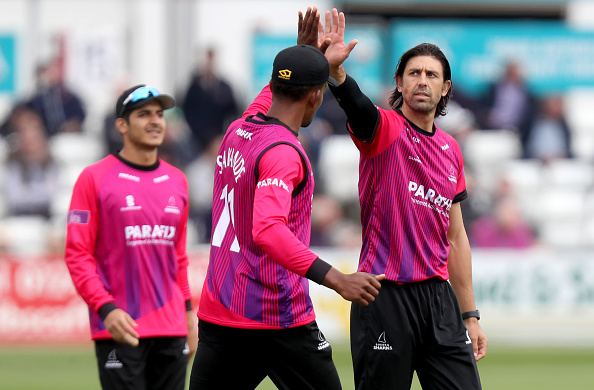
Mir Hamza, Abi Sakande and David Wiese celebrating a wicket while playing for Sussex's current one-day side
He laughs when asked to compare the one-day cricket of 1963 with the game being played nearly five decades later. “It’s like black and white compared to colour,” he smiled. “Back then the players just looked upon it as another game.”
There was, at least, a reluctant realisation among the game’s governors at Lord’s that something needed to be done to liven up domestic cricket. 1963 may have marked the height of the Swinging Sixties but county cricketers had only just stopped coming onto the field from separate gates, when the distinction between amateurs and professionals came to an end in 1962. Finances were dwindling and players did not earn much for their six-days-a-week summer occupation and were seldom employed by the counties during the winter.
In 1963 Sussex’s home programme of 16 first-class matches drew a total attendance of 42,000, an average of less than 3,000 a day for three-day games. A year later that aggregate had dipped to 36,000. The halcyon post-War days when crowds flocked to county cricket in their thousands were becoming a distant memory and most counties were feeling the pinch.
The MCC had noted the success of the Rothmans International Cavaliers, who had been founded by Bagnall Harvey, an impresario and agent who had looked after the affairs of Denis Compton and turned him into someone recognised beyond just cricket followers. Compton effectively became English cricket’s first poster boy in the post-War years thanks to sponsorship and endorsements arranged by Bagnall.
Among Bagnall’s friends was Ted Dexter, England and Sussex captain. Bagnall found a sponsor – tobacco manufacturers Rothmans – who were interested in promoting regular one-day games on Sundays, the one day of the week which the average British worker took off at a time when six-days-a-week was still the norm in offices, shops and factories.
The BBC were interested in showing the matches, but only if they would finish at a certain time. It was a guarantee Bagnall could not give until Dexter showed the enlightened thinking that he was to replicate on the field when the one-day knockout began.
“You can,” Dexter insisted. “You limit the overs and restrict the run-ups.” Dexter wrote the rules and out of that the Rothman’s International Cavaliers – cricket’s equivalent of the Harlem Globetrotters - were born.
“Ted and I were always dashing off to play for the Cavaliers,” said Parks. “It was great fun and there used to be some fantastic players involved. The crowds turned up in big numbers – they loved it because they could go along after Sunday lunch and still be home by 7pm. We’d play at a lot of club grounds and for a lot of people it was the first time they had seen some of the best players in the world. You have to remember that back then not a lot of people had TV and apart from the Tests there was very little cricket on television anyway.”
Having noted the success of the Cavaliers, in 1962 the MCC’s cricket committee, whose members included Jim, gave the green light to the One-Day Knockout. Sponsorship was secured from Gillette, although they were never mentioned in the pre-publicity, and on May 22 1963 English cricket entered a brave new world when eight first-round ties took place, Lancashire having beaten Leicestershire in a rain-affected preliminary round tie to secure their progress into the last 16.
Jim wasn’t alone in thinking that the competition would be a short-lived experiment. There was at least a consensus amongst the counties that something needed to be done to attract more spectator interest and Gillette’s offer of £6,500 met with a favourable reaction.
“We loved the game, of course we did, and if you played Test cricket the rewards were there. But cricket was never going to make anyone wealthy,” remembers Jim.
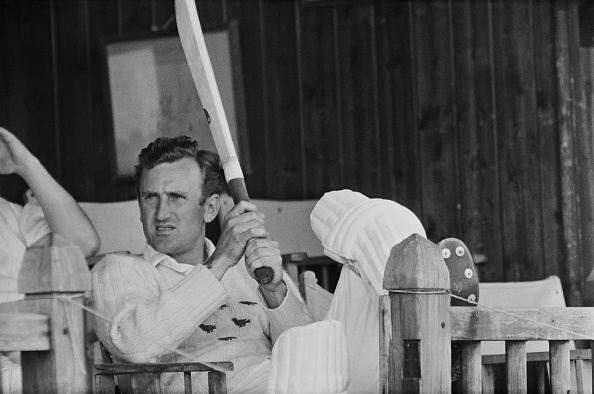
Ted Dexter seated on the veranda of a pavilion during a County Championship match between Sussex and Kent on 16th June 1964
Dexter hated dull cricket. To liven up a moribund Championship game he would often declare early to set a tempting target or collude with his opposite number “to try and make a game of it.” If his overtures were rejected he would quite happily leave Parks or another of the senior pros in charge and retire to the captain’s room at Hove to listen to the horse-racing on the radio.
But he quickly realised that with their strong seam attack, a long batting order and good fielders that Sussex could be a force in the new format. “We didn’t do any specific practice for the first game but Ted did get us together and said ‘Look, we’re never going to win the Championship but with our attack and our batting we can win this. We will bat first if we win the toss. If we don’t, you’ll find the others will put us in. We will play properly for 20 or 30 overs then Parkser, (Ken) Suttle and Coops (Graham Cooper) would get the runs.’
“Ted grasped the nettle very quickly,” added Jim. “I remember that first-round game against Kent at Tunbridge Wells. It was a good batting wicket and we were fortunate that year that we batted first in every game because Ted preferred to defend a target. In contrast to Ted, dear old Colin Cowdrey was still attacking with two slips and a gully in the 65th over.
“When we fielded we tended to start with a slip but not for long. Ted soon had everyone on the boundary. Our seam attack would bowl back-of-a-length which was difficult to score off and we always had a man in front of the wicket rather than at, say, second slip, to cut off the singles.”
Sussex made 314 for 7, the highest total of the round, with Suttle underpinning the innings with 104 batting at No.3. Jim made a sprightly 59 and Dexter 45. Despite 127 from Peter Richardson, which won the Kent opener the £50 man of the match award, Sussex were victorious by 72 runs, Dexter employing his men on the boundary virtually from the start.
“Ted’s idea was to keep wickets in hand for 30 overs and then have a go,” said Jim. “We had a lot of guys who could hit the ball hard in our lower order. Les Lenham and I had a go at the end and in the last eight overs we scored a hundred runs. Even by today’s standards with the big, heavy bats they have that isn’t bad going at all.”
The ease of their victory did not surprise Parks. “We had a lot of players in our side who were suited to one-day cricket,” he said. “We had some good stroke-players like Alan Oakman, Kenny Suttle, Ted, of course, and Richard Langridge and guys down the order who could slog for want of a better description – Les, Graham Cooper and Tony Buss. We also had a fine seam attack. If you took our side in 1963 and 1964 and put it in the modern era they would have been hard to beat and we’d have loved a crack at Twenty20.”
The Kent committee was furious at what they regarded as negative and unsporting tactics by Dexter and wrote a letter of complaint to Sussex along those lines. Dexter laughed it off. He knew this was the best chance the county had of finally ending their long wait for silverware. “We were there to win, not make friends,” said Jim.
The players treated it as just another game according to Jim, admittedly a longer one than they were used to. Play didn’t start until 11am and with lunch, tea and 130 overs to fit in matches would often finish in twilight, especially with captains reluctant to employ their spin bowlers. Not surprisingly, the competition reverted to 60 overs in 1964.
The Nevill Ground had been packed for the Kent game. The public clearly had an appetite for one-day cricket but Sussex were nonetheless taken aback by the size of the audience for the second-round match against Yorkshire at Hove three weeks later. More than 15,000 spectators paying 5 /- (25 pence) shoehorned themselves in for an absorbing game which finished at 7.45pm with Sussex victorious by 22 runs and into the semi-finals.
“I don’t think I played in any better one-day game than the quarter-final against Yorkshire,” remembers Jim. “The ground was packed. There were 15,000 inside and when you consider how relatively small the County Ground is you can get an idea how busy it was.
“Ted and I toured with England and were used to big crowds, particularly in places like India, but to a lot of the lads it was a bit of a shock. They just got on with it though.”
Yorkshire had an outstanding side including Fred Trueman and Tony Nicholson – both experienced and highly skilled bowlers –with Trueman operating up the slope and conceding just 40 runs in his 14 overs.
“No bowler could bowl right through,” said Jim. “You could bowl a maximum of 15 overs so most would bowl in two or three spells. And hardly any side had a spinner. Seamers gave you more control so most captains preferred all-seam attacks.”
Sussex made 292 off 64 overs with Jim scoring a fluent 90 at No.5 after opener Langridge made 56 and Dexter 44. “It was a big total but they started off quicker than we had and for a while they looked like favourites.”
Jim was in fine form that day. Sussex were 126 for 3 when he came in and the run rate needed to quicken. After taking just 70 minutes over his first 50 he took the attack apart, scoring 30 runs off his next eight balls. “I hit Tony Nicholson over extra cover a lot. The ball was coming onto the bat quickly and therefore went a bit finer. I hit two or three sixes over point off the front foot, one of which landed on the pavilion roof.” Jim then hooked Mel Ryan for six, hitting a spectator, as he scored his last 40 in 15 minutes before Nicholson trapped him lbw for a magnificent 90.
A young Geoff Boycott remembers Jim’s onslaught well. “I had never seen anyone play like that. Tony would bowl mainly out-swingers with the odd nip-backer from the Sea End and Jim twice hit him inside out over extra cover into the pavilion. I’d grown up playing tough league cricket in Yorkshire on green wickets where you just didn’t play shots like that. It was unbelievable to watch.”
Yorkshire could bat deep as well and the turning point came when a bespectacled Boycott took on Ian Thomson in the deep.
“Geoff was only 22 and it was the first time I’d seen him play,” remembers Jim. “Technically, I think he was the best batsman we produced since the Second World War and he had all the shots, especially in his younger days. He’d got to 71 and they needed 30 with two wickets in hand. He guided Tony Buss down to third man where Thommo, who was off balance, picked it up. He had a fantastic arm, I didn’t have to move an inch to take the catch and whip the bails off with Geoff a yard short.”
Jim caught Nicholson off Buss to complete the victory as Sussex got home by 22 runs, their success greeted by a mass pitch invasion of delighted schoolboys. With four catches to go with his runs, Jim was named man of the match and he shared the £50 among his team-mates.
Jim’s form in one-day cricket was not reflected in Championship games. He only made one first-class century that summer – 136 against Kent in late July at Hastings where there were record gate receipts for the Central Ground of £1,400 – but his form with bat and gloves caught the eye of his captain, who was also leading England, and when Northamptonshire’s Keith Andrew was dropped after the first Test against West Indies Jim was recalled to the Test team for the second Test at Lord’s after an absence of nearly three years.
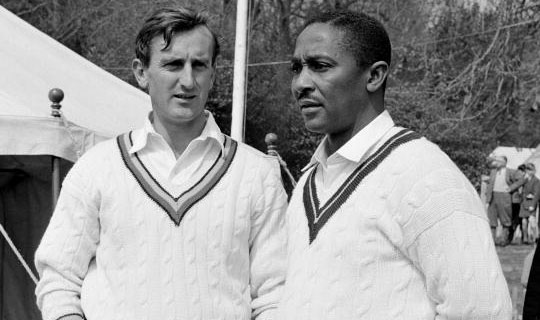
Dexter with West Indies captain, Frank Worrall prior to the opening match of the West Indies tour of England, against the Duke of Norfolk's XI at Arundel, 27th April 1963
Eight days after the victory over Yorkshire in the quarter-final, Jim found himself playing in what is still regarded as one of the best Test matches ever seen in this country. It reached a climax with two balls to go when Colin Cowdrey, his left arm broken earlier in the day and in a sling, went out to join David Allen with six runs wanted and one wicket needed by West Indies. Allen kept out Wes Hall to prevent England going two-down in the series.
Jim’s contribution – 52 runs (35 and 17) and three second-innings catches was tidy enough but he saw at first hand two of, in their own ways, bravest Test innings ever played in England – Dexter’s counter-attacking 70 off 73 balls in the first innings against a phenomenal West Indies’ pace attack and Brian Close’s second-innings 70 when he was peppered by Hall, Griffiths & co. and left black and blue with bruises.
Griffith got Jim out four times during the series and it didn’t take long for Jim to join a long list of opponents deeply suspicious of his action. “He was a chucker, but he didn’t chuck all of them,” recalled Jim. “When he bowled properly he was medium pace and you could play him with one hand in your pocket. He chucked his bouncer, which was three or four yards quicker. When you chuck a ball it cuts and it rotates against the arm. At Lord’s this bouncer bowled up the hill pitched and got underneath my bat, went between my upper arm and chest and through to the keeper.”
England won the third Test at Edgbaston by 217 runs where Jim avoided losing his wicket to Griffith but only made 17 runs (12 and 5) and took three catches. Thanks to Freddie Trueman’s 12 wickets, including 7 for 44 in the second innings, England headed to Headingley all-square in the series.
There Jim scored 22 and 57 – he made nine Test fifties and two centuries in 46 games - in the second innings on the fourth day when, despite the certainty of English defeat, a crowd of 20,000 turned up. Jim and Brian Close added 69 in 73 minutes before Jim was leg before to Lance Gibbs. He hit five fours and two sixes, one of which was carried over the boundary line by Joe Solomon.
West Indies completed a 3-1 series win at The Oval in August where Jim and Dexter secretly filmed Griffith’s action on an 8mm cine camera. A few weeks later they showed the footage to a selected audience at Hove including a couple of umpires who both agreed that Griffith’s action was illegal. Jim felt vindicated even though impotent authorities both at Lord’s and in the Caribbean did nothing about it. “There were more blatant chuckers than Charlie,” says Jim, “But no one was as quick. With him you couldn’t see the line, pick up the speed or bounce and defend yourself.”
Even Griffith would have struggled to get much out of the wicket at Northampton where Jim and Sussex headed between the third and fourth Tests for the Gillette Cup semi-final. Having beaten two of the strongest counties in the country, Wantage Road held few fears for Dexter’s men.
“We always fancied our chances up there,” said Jim. “Ted made 115 (17 fours, 1 six) and we put on 160 together for the fourth wicket and then he took three wickets with his medium pace.”
Jim’s contribution to the partnership was 71 but there was a sensational finish to the Sussex innings when David Larter, no-balled by umpire Syd Buller five times earlier in the day for over-stepping, finished things off with a hat-trick. If only Buller had been a bit braver with Griffith in the Tests.
Northamptonshire’s target was 293 and they never got close in drizzle and worsening light. Jim ran out Brian Reynolds with a direct hit, the dangerous Colin Milburn was dismissed for just six and although Roger Prideaux, who was to become a Sussex player, scored 73 Sussex’s all-seam attack held sway. Thomson took 4 for 33 in 13.3 overs and when the game finished just before 8pm Dexter’s men had won by 105 runs. Worcestershire, having bowled out Lancashire for just 59 in the other semi at New Road to set up a nine-wicket win, were to be their opponents in the final.
The final itself was still just under months away and Sussex put thoughts of Lord’s to one side. There was a Championship to be won and in mid-July, after recording their eighth win of the summer, they led the table. But, clearly hindered by the absence of two of their best players who were with England, they won just twice more and in the week before the final they spent most of the time cooped up in the pavilion at Hastings, the three-day festival match against Arthur Gilligan’s XI at the Central Ground abandoned without a ball bowled.
At least it gave Jim and the rest of the squad, which included John Snow for the first time in the competition, ample time to get to London on the day before the final, although they went straight to the hotel. There was no need to check on the wicket at Lord’s. After a week’s rain they knew the uncovered pitch would be damp.
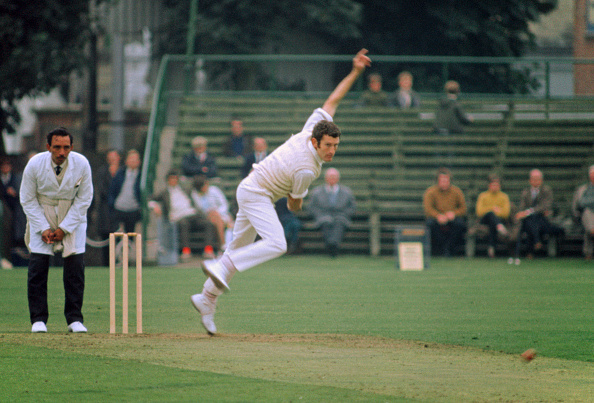
John Snow playing for Sussex against Kent in 1970
Snow was beginning to make his mark in Championship cricket and his inclusion in the final XI was not that great a surprise. Bob Pountain, who had played against Kent and Northamptonshire, missed out. “To be honest, Bob didn’t contribute to either win a great deal,” recalled Jim. “We had to hide him in the field a bit because he wasn’t the quickest on his feet.” Pountain would spend the following winter, when he should have been felling trees for the former Surrey captain Stuart Surridge, pedalling away on a static bike in the old Hove General Hospital in an effort to lose weight. He shed two and a half stone but the perception of him remain unchanged. Jack Arlidge, the doyen of the Hove press box, nicknamed him ‘Man-Mountain Pountain.’ Jim adds: “His real name was Francis, I never understood why he was called Bob.”
When they arrived at Lord’s the following morning Jim wasn’t convinced there would be any cricket at all. The atmosphere was still damp but with a full house of 25,000 in the crowd the onus was on umpires Fred Gardner and Frank Lee to get the players out there. “It would never have started these days but I think the authorities felt we had to play,” said Jim.
As well as Snow, Sussex employed spin for the first time in the competition. Alan Oakman’s off breaks were good enough to have brought him 51 wickets at 17.01 in the Championship that summer and he finished top of the county’s bowling averages but it was with the bat that he made his first contribution, helping Langridge put on 62 for the first wicket. The pitch was slow and Worcestershire’s two left-arm spinners Norman Gifford and Doug Slade, backed up by Martin Horton’s under-rated off breaks, were soon making inroads, sharing the first seven wickets to fall. But Jim counter-attacked impressively as conditions began to ease and made 57 in 90 minutes, driving the ball handsomely to the delight of an increasingly vociferous contingent of Sussex supporters, most of whom were on the Tavern side of the ground. He hit a six and four fours.
Sussex eventually got to 168 with only Jim, the openers and Snow, who made 10 batting at No.10, getting into double figures. Gifford’s 4 for 33 in 15 overs earned him the Man of the Match award and Slade took 2 for 23 from 11. Horton finished with 1 for 20 from eight.
“It didn’t appear to be enough but we were always confident,” insists Jim. Whereas Worcestershire captain Don Kenyon had employed two slips, a gully and short leg Dexter went on the defensive from the start with just a slip for the opening bowlers Thomson and Buss. Dexter was going to make Worcestershire graft for every run.
The light got steadily worse as late afternoon turned to early evening. At 80 for 2 Worcestershire were in a strong position but then Oakman, bowling an impeccable length, had Tom Graveney caught by Dexter and from there on Worcestershire began to lose wickets regularly. Oakman’s 13 overs cost just 17 runs and with the seamers providing excellent support at the other end Sussex strangled the life out of the reply.
“Oaky should have had Man of the Match that day,” reckons Jim. “He kept Ron Headley quiet for more than two hours and then when Tom came in he had to up the tempo. He hit Oaky down to long on and there was Ted and Les Lenham going for the same ball. I remember Oaky shouting ‘Captain!’ because he had more confidence in Ted to take the catch and he caught it.”
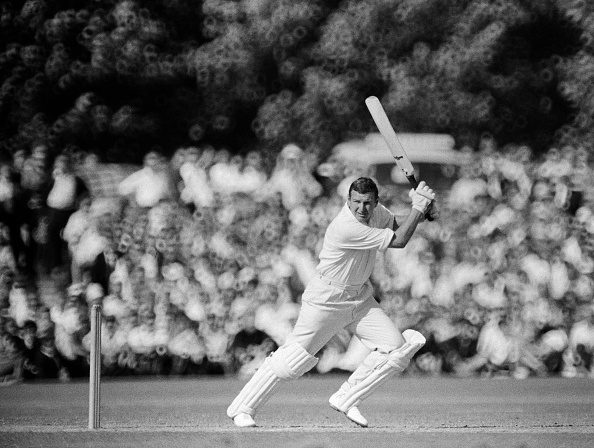
Jim Parks batting for Sussex against Kent t the St Lawrence Ground, Canterbury
After Headley skied Don Bates to mid-on Snow was the sixth bowler employed by Dexter and, betraying any nerves he might have had, the son of a Bognor vicar had Bob Broadbent caught in the deep before bowling Gifford and Jack Flavell for ducks. “I remember seeing a picture of the Flavell dismissal in the paper the next day,” said Jim. “It was so gloomy he could barely see the ball. The picture just shows him backing away and the middle stump flying out of the ground.”
At 133 for 9 it looked all over but Jim’s opposite number Roy Booth and last man Bob Carter decided to have some fun. They added 21, forcing Dexter to once again employ his fielders on the boundary. Carter was eventually run out and Sussex had won just before 7pm on a dank September evening by 14 runs.
“I always felt we would defend 168 even though it was less than three an over,” said Jim. “The conditions didn’t really improve all day and when the last wicket fell it was very gloomy.”
As the trophy was held aloft by Dexter, the massed ranks of the Sussex faithful in the Tavern Stand raised their glasses in toast and ‘Sussex by the Sea’ rang out.
The atmosphere set the tone for future one-day cup finals at headquarters although Wisden was somewhat sniffy in its assessment. “The new knockout competition aroused enormous interest. Very large crowds flocked to the matches and 25,000 watched the final at Lord’s.
“At Lord’s, supporters wore favours and banners were also in evidence, the whole scene resembling an association football Cup Final more than a game of cricket.
“Two points invited criticism: Firstly, the majority of counties were loath to include even one slow bowler and relied mainly on pace. Secondly, the placing of the entire field around the boundary to prevent rapid scoring – Dexter used this tactic in the final – became fairly common. The success of the spinners in the final may have exploded the first theory.”
John Arlott, writing in the Guardian, was more enthusiastic. “Perhaps it was not strictly speaking first-class cricket. But as entertainment it is with us for the foreseeable future and let us be grateful for it.”
By the time Sussex had received the trophy and toasted their success in the dressing rooms it was getting on for 9pm. Nothing formal in the way of a celebration had been planned.
Jim remembered that Tony Mercer, who was directing the Black and White Minstrel Show at the Victoria Palace Theatre, had issued an open invitation to the Sussex players to come to the show were they to win. “Tony was a big cricket fan and he told us if we won to come to the show. So we all piled into cabs and made our way down there. We’d had a few to drink by then and it was all a bit surreal. Halfway through the show they made this announcement that the winning Sussex team were in the audience and they invited us on stage and we got a fantastic ovation. I will never forget it.” By the end of the night most of the £25 bonus the players had received for winning the first silverware in Sussex’s history had been spent.
Jim’s aggregate of 277 competition runs placed him at the top of the first ever Gillette Cup averages. He made four half-centuries and averaged 69.25. Even Dexter, who finished with 207 runs, was overshadowed.
A few days later, the new one-day champions entertained the West Indies in front of another 15,000 full-house at Hove – and beat them, Jim contributing 39 as Sussex won by four wickets with three overs to spare in a 55-overs contest chasing a target of 178. Griffith was not included in the tourists’ line-up. It was the last game of a 38-match tour which had started back in April at Eastbourne against Col. L.C. Stevens’ XI.
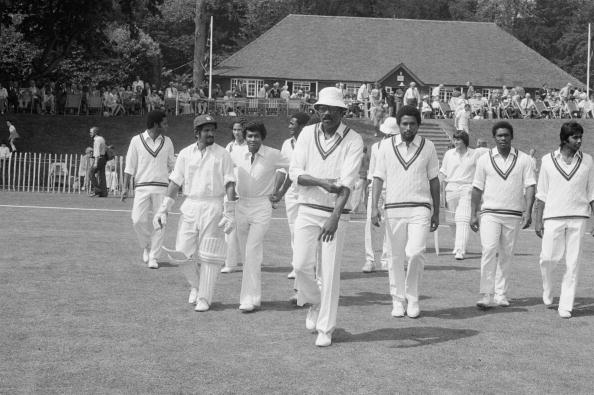
West Indies heading out at Arundel
With Jim and Dexter regularly on England duty during the mid-60s Sussex lacked the strength in depth to mount a sustained challenge for the Championship but, buoyed by their success in 1963, they grew stronger as a one-day force. A year after their first Lord’s triumph they were back there again in the Gillette Cup final, this time against Warwickshire.
“Ted got there late and only just arrived in time for the toss. I was going to go out with their captain MJK Smith when Ted turned up and tossed up in his civvies,” remembers Jim. “The dew was glistening off the pitch and we knew with the 10.30am start that the ball would swing. MJK decided to bat first. The first ball from Ian Thomson to Norman Horner swung so much it was nearly called a wide.”
Thomson’s new-ball spell brought him 3 for 14 and he finished with 4 for 23. Smith, who was to lead England in South Africa the following winter, chose the Sussex seamer for the tour party on the strength of his performance that day. Warwickshire were dismissed for 127 and when Sussex replied the haze had lifted and batting was a lot easier in late summer sunshine.
“All the crowd wanted was to see Ted bat for a bit,” said Jim. “But they had little chance. When we came together we were 97 for 2 and only needed another 31.” Sussex retained their trophy with ease.
It was another 39 years before Sussex won the County Championship for the first time and Jim was as proud as anyone when Murray Goodwin hit the ‘winning’ runs against Leicestershire at Hove in 2003.
By then one-day cricket in England had become unrecognisable from the somewhat rudimentary game played by those pioneers back in 1963. Six years after the Gillette Cup the concept of the Rothman’s Cavaliers was effectively standardised with the advent of the 40 overs John Player League with limited run-ups and eight overs maximum per bowler – perfect for the Sunday afternoon audience at the ground or on BBC2. A generation learned to love the game through watching those broadcasts where Peter Walker or Peter West would do some rudimentary links five minutes before the camera – only one behind the arm remember – would pick out John Arlott and Jim Laker, usually perched precariously on a flimsy wooden gantry at places like Glastonbury, Bradford and Ilford, for commentary.
“It was great fun and the crowds loved it,” said Jim. “For starters, the ground was the only place in England you could get a drink after 2pm on a Sunday afternoon.”
By 2003 counties were playing 20 overs bun-fights in front of full houses.
“I think that side of 1963 would have been pretty good at Twenty20,” reflects Jim. “It certainly suited me and you would have had a job to set a field to someone like Ted. He was a magnificent batsman because he hit it straight. You can’t put a fielder in front of the sight-screen can you?”
This piece originally featured in Bruce Talbot's fantastic book, Sussex CCC Match of My Life. Bruce has also worked with former Sussex captain Ian Gould on his autobiography, Gunner, which is out now and published by Pitch (£19.99).




